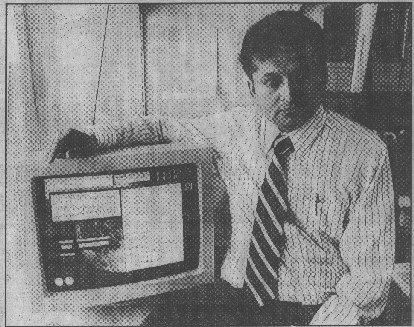


Teaching computers to read involves teaching them to "think" like humans--by learning from experience and making educated guesses. But what most people learn easily at age 6 is proving far more difficult for computers.
Humans "don't just do character recognition. We don't just look at one thing." said Sargur Srihari, a professor at the State University of New York's Buffalo campus. "It's going to be many many years before computers can read documents such as handwritten letters."
For now, Srihari and his team of about 30 assistants would be satisfied if the computer could read the addresses on the envelopes those letters came in. So would the Postal Service, which is supporting their project with $2.1 million grant.
The central post office in Buffalo, for example, must sort up to 3.3 million pieces of mail a night. Its existing equipment could process up to 42,000 letters an hour--if the addresses were perfectly printed. But those machines reject more than 30 percent of the mail as unreadable, said Dennis Wnuk, a postal operations officer in Buffalo.
"Primarily, what our optical character readers can read is business type mail, preprinted mail," Wnuk said. "The average piece of mail that a residential customer will put into a collection box, we'll only read about 25 percent of those - and that's only if he prints very well or happens to have a typewriter."
Business mail is also a problem if it comes in a gaudily printed envelope, if the address is too high, or if it is folded so that part of the letter shows through the window along with the address, said John Gullo, an automation and readability specialist at the post office.
The first major problem facing Srihari's team is to find the address itself -- a simple task for humans, but bewildering for computers that must separate the address from the "noise" on such things as magazine covers and junk-mail envelopes.
The SUNY computer zeroes in on text blocks with the proper shape -- those with lines flush to the left, for example -- and location to solve that problem, and has already achieved a 90 percent success rate.
Srihari's computers can now read about 75 percent of handwritten ZIP codes; current postal equipment can only read about 5 percent of them. But the new process is painfully slow -- up to a minute for each piece of mail. Eventually, Srihari said, the technology will have a wide variety of applications. For example, a busy newspaper reader could feed his paper into the computer which would cull out only those stories of interest to him.